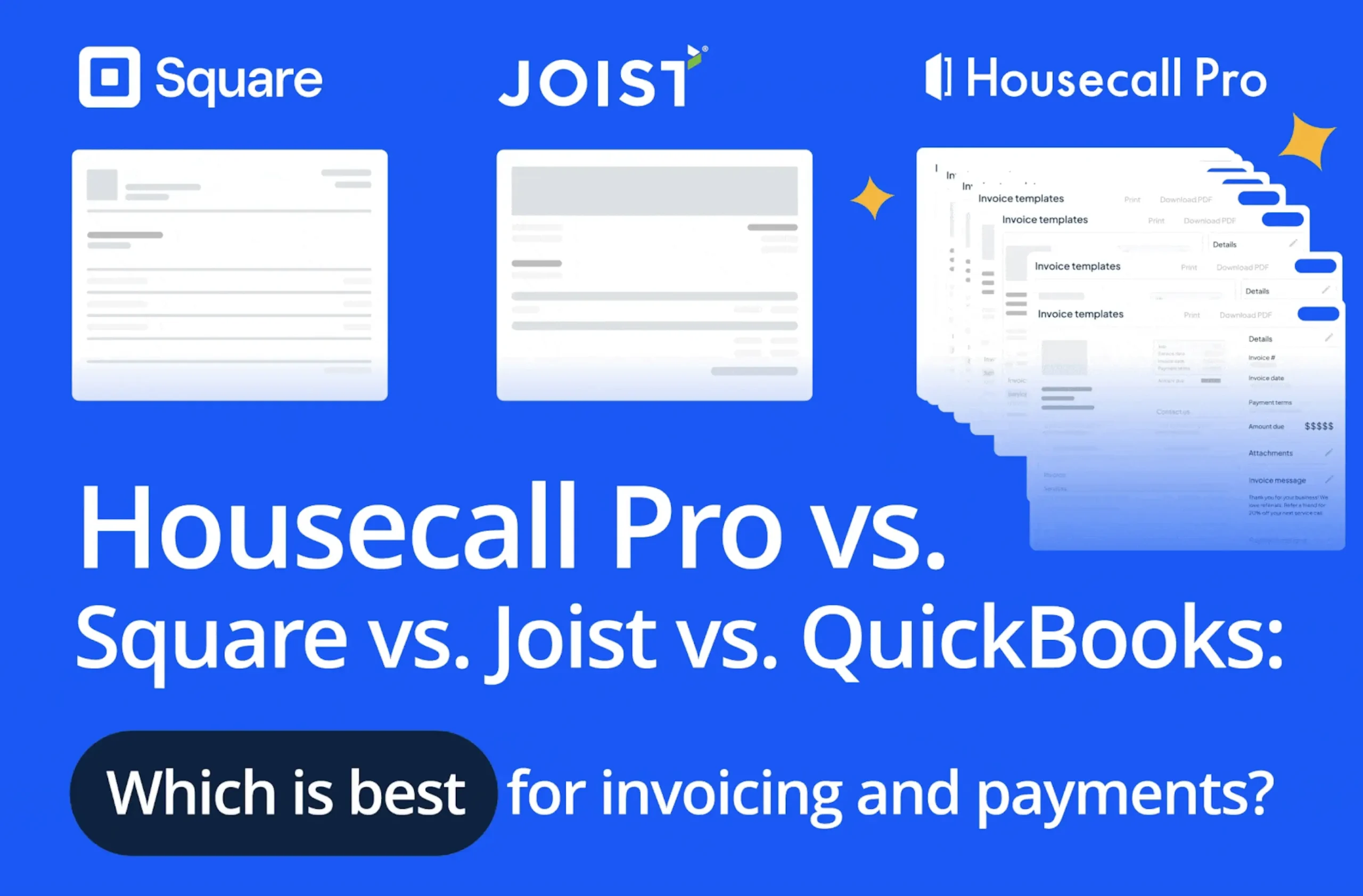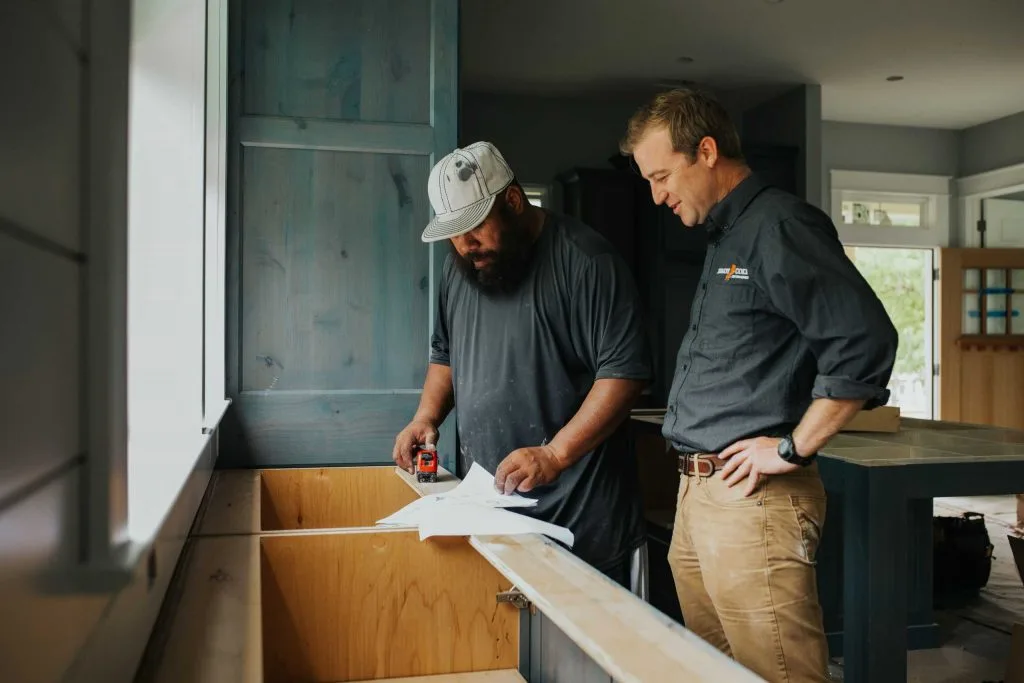
Striking the right balance in your HVAC pricing can make or break your business. Charge too little, and you’re barely scraping by. Charge too much, and your customers will abandon ship and head straight to your competitors. The key is finding that sweet spot—the one that keeps your business profitable while ensuring your customers see the value in your services.
So, how do you price HVAC jobs like a pro? The answer? By creating your own strategy that covers your unique costs, maximizes profitability, and keeps your services competitive in your area. Here’s how to price HVAC jobs with a strategy that suits you.
How to Price HVAC Services for Maximum Profitability
Step 1: Choose the Right HVAC Pricing Model
First things first, you need to pick a pricing model that fits your business and aligns with your goals. In the HVAC industry, hourly rate pricing, flat-rate pricing, and hybrid pricing are the most common. Each one has its advantages and disadvantages, so you’ll need to consider the types of jobs you handle and customer expectations to ensure you choose the right fit.
Hourly Rate (Time + Materials) Pricing
As the name implies, hourly rate pricing charges by the hour, plus the cost of the materials used. It’s most commonly used for complicated repairs or unpredictable service calls.
Notable perks of this option include:
- Transparent and easy to explain to customers
- Allows for flexible adjustments based on job complexity
- Ideal for troubleshooting and custom projects
Of course, it’s not all sunshine and rainbows. It can cause sticker shock for customers, especially if the job takes longer than expected. Plus, it requires precise time tracking to avoid undertaking.
How to Set Your Hourly Rate
If HVAC hourly charges sound like the perfect fit for your business, you’ll need to choose the right amount. Ideally, you should find that sweet spot that allows your business to turn a profit without shocking your customers with staggering prices.
Factor in things like HVAC technician wages, overhead costs, and your desired profit margin. Remember to account for all expenses plus your profit goal. Additionally, remember to keep regional cost variations in mind. If you have locations in multiple states, your prices might look entirely different from location to location.
Here’s how to price HVAC jobs with an example formula:
(Total expenses + profit goal) / billable hours per year
For example, let’s suppose that your total annual expenses (including technician wages, office rent, vehicle maintenance, and insurance) come out to $250,000. You’re shooting for a profit of $100,000. If your team works 2,000 billable hours per year, the formula would look like this:
($250,000 +$100,000) / 2,000 = $175 per hour
At this rate, you can cover your costs while hitting your profit goals.
Flat-Rate Pricing
With flat-rate pricing, you charge a set amount for a specific service. That price doesn’t change regardless of how long it takes you to finish the job. It’s a great choice for routine maintenance calls and standard installations.
Benefits of this option include:
- Customers appreciate knowing the price upfront
- Eliminates disputes over labor hours
- Encourages efficiency among technicians
Like hourly-rate pricing, though, it has a few drawbacks. For example, if a job takes longer than expected, you take the hit. Lengthier jobs can eat into your profits, so you need to be precise with your cost estimates to remain profitable.
How to Set Flat Rates
Flat-rate pricing can be an outstanding choice for the standard services you offer with little variation. If you plan to use this option, you’ll need to whip out your math skills to find the best flat rate for each service.
Calculate the average time to completion for each service. Add up all parts, labor, and overhead costs, factoring everything into the final price. If you have management software for your HVAC business, use the service time tracking feature to calculate and adjust flat rates accordingly.
Pricing might vary quite a bit from one region and service to the next, so you’ll need to find what works for you. For example, you might offer a flat-rate AC maintenance service for $300.
Once you iron out the details, create a price book. This way, you’ll have something to refer to as needed. If you haven’t created a price book before, this template can simplify the process.
Hybrid Pricing
Hybrid pricing models combine the best of both worlds. With this option, you get the perks of both flat-rate and hourly-rate pricing, using whichever option best fits the particular service. You might use your flat rates for standard services, reserving your hourly rates for complex or unpredictable jobs.
While you’ll need to do more work in the beginning (since you’re not calculating rates for one or the other), having the flexibility to offer both can be well worth it in the long run.
Step 2: Research Rates in Your Local Market
Once you pick a pricing model, turn your focus to your local market. What do your competitors charge? What do your customers expect to pay?
Understanding your local market is a must to set competitive and profitable prices. You need to find a happy pricing medium between profitability and industry standards while remaining attractive to customers.
Know Your Competitors
Start with your competitors. Research what they charge for similar services. Are they using flat-rate pricing, hourly rates, or both? Do their customers have issues with their pricing models?
Generally, you can find all the information you need on your competitor’s website and online review platforms. Take a few minutes to surf the internet and get a better idea of what your competitors offer.
Once you do, you can adjust accordingly. This doesn’t mean you should undercut your competitors. Instead, price your services based on the value you provide. Think about your expertise, the warranty coverage you offer, and the quality of your customer service.
Know Your Customers
While getting a feel for your competitors’ offerings is important, they’re not your target audience—your customers are. Identify who your ideal customers are: residential, commercial, or both.
Think about what your customers value most. Do they want the lowest prices? The most reliable services? The fastest services? Someone with extensive expertise? This can help you shape your pricing based on what you offer.
While you’re at it, think about seasonal demand fluctuations. Do you have specific seasons where you’re absolutely swamped and seasons where work is slow? Adjust your prices to maximize revenue while staying competitive.
At this point, it’s not a bad idea to consider offering financing options. HVAC work can be expensive for your customers, and financing options can be the difference between your customers hiring you or them hiring someone else who can accommodate their snug budget.
Offering financing options or service plans, which is easily doable through Housecall Pro (financing facilitated by Wisetack), can be a great way to appeal to budget-conscious customers, giving them the flexible payment solutions they need.
Average HVAC Service Prices
HVAC service pricing is far from a one-size-fits-all setup (although it would be convenient if it was). Now, that said, it can be helpful to see what the industry averages are for different services. This way, you can get a general idea of what you might charge and go from there. Here are a few industry averages, situated in an HVAC service price list, to help guide your pricing:
HVAC Repair Pricing
| Service | Average Price Range |
| Service call fee | $75 to $150 |
| Minor repairs, such as capacitor replacement | $150 to $400 |
| Major repairs, such as compressor replacement | $1,200 to $3,500 |
HVAC Installation Pricing
| Service | Average Price Range |
| Furnace installation | $3,000 to $7,000 |
| Central AC installation | $3,500 to $10,000 |
| Mini-split installation | $2,000 to $8,000 |
Ductwork Pricing
| Service | Average Price Range |
| New duct installation | $10 to $25 per linear foot |
| Duct cleaning | $300 to $700 per home |
HVAC Maintenance Plan Pricing
If you’d like, you could offer an HVAC maintenance plan. Oftentimes, HVAC companies will provide these services as a flat-rate option, which makes them more appealing to customers. The average cost of these contracts usually ranges from $150 to $500 per year, which includes seasonal tune-ups and minor repairs.
Pro tip: Use Housecall Pro’s free HVAC calculators to price your services for maximum profit:
- HVAC Service Price Calculator – Quickly determine your service rates by factoring in overhead, labor, and profit margins.
- HVAC Service Markup Calculator – Ensure you’re applying the right markup to materials and labor so every job is profitable.
Step 3: Calculate Job Costs
To price your jobs accurately, you need to account for all of your expenses, including materials, labor, and overheads. If you don’t, you might end up footing part of the bill, which isn’t particularly conducive to running a successful business. Taking the time to accurately calculate these prices now will ensure you have a pricing model that keeps your business profitable.
Material Costs
Track everything, and we mean everything that you use, from refrigerant to filters to fittings. This way, you won’t end up footing the bill for materials you use, even the little things (those add up).
You can keep costs more manageable by buying in bulk or working with multiple suppliers to get the best deals available. Better yet, do both!
Labor Costs
Labor is right up there with material costs, serving as a primary contributor to the overall cost of HVAC jobs. So, when calculating pricing, remember to account for those labor costs, including employee wages, benefits, and payroll taxes. Don’t forget to include training costs for technicians, downtime, or non-billable hours.
Use vehicle GPS tracking and time logs to measure actual labor time spent per job.
Overhead Costs
Your overhead expenses can be easy to forget, but they contribute to the cost of running your business and providing services, so don’t forget to factor those in, too. Include expenses like office rent, utilities, vehicle maintenance, fuel, marketing, software, and insurance.
All of your overhead costs should be built into each of your service prices. This part can be a bit tricky, so if you’re having a tough time, it might be best to chat with an accountant. They can help you determine what your overheads are and what might make sense for pricing.
Overhead costs can be quite inflexible, but that doesn’t mean there aren’t ways to save here, too. For example, you can reduce overhead costs by investing in route optimization to minimize fuel expenses.
Step 4: Apply Markup for Desired Profit Margin
Profit is what keeps your business up and running and on track for growth. It’s important to add a service markup to cover overhead and unexpected costs, which, in turn, helps ensure sustainability.
Ideally, you should shoot for a 20% margin or higher for profitability. Revisit that profit margin each quarter to account for market shifts and inflation. Use Housecall Pros’ HVAC profit margin calculator to
If you’d like, you can offer discounts for recurring customers. This helps keep your customers happy and loyal while ensuring you maintain profitability.
Pro tip: How to maximize HVAC business profit margins and revenue.
HVAC Installation Cost Example: Gas Furnace & Heat Pump
Here’s an example of how to calculate your HVAC service prices:
Job: Install a Gas Furnace and a Heat Pump
- Number of workers: 2
- Hours to complete job: 10
- Average hourly pay: $30
- Material costs: $7,000 (furnace, heat pump, and supplies)
- Overhead expenses: $500 (calculated from total monthly expenses)
- Profit goal: 20%
Total Cost Before Profit:
$600 (labor) + $7,000 (materials) + $500 (overhead) = $8,100
Final Service Price with 20% Profit:
$8,100 x 1.20 = $9,720
Get In Touch: 858-842-5746
Let us earn your trust
On average, Pros increase monthly revenue generated through Housecall Pro by 35% after their first year.
See plan options and feature breakdown on our pricing page.
Step 5: Create an Accurate Estimate
Last but not least, it’s time to start making quotes! With your pricing set, you can start creating and sending out clear, detailed quotes to your customers that build trust and ensure transparency. Make it even easier on yourself by using Housecall Pro’s job quoting software.
How to Create a Quote in Housecall Pro:
- Enter customer details: Add the customer’s name, address, and contact information.
- Add line items: These are your basic costs, such as labor rates and material costs.
- Apply overhead and profit: Verify that your pricing includes overhead expenses and your desired profit margin.
- Include terms and conditions: Outline additional details, such as warranty coverage, exclusions, and any necessary disclaimers.
- Send the quote: Review the final price, double-check the whole thing for accuracy, and then send the quote via email or text.
- Follow-up: Use automated reminders to stay on top of quotes, follow up without effort, and increase your chances of closing the deal.
Smart Pricing = More Profits & Happier Customers
A well-planned pricing plan is a must-have for sustained business growth. It’s what allows you to do what you do best while maintaining profitability and happy customers. The best pricing plans balance profitability, efficiency, and customer satisfaction, and while it can take a good bit of effort to find the happy medium, it’s well worth the effort.
With the strategies in this guide and help from Housecall Pro’s HVAC pricing software, you can hit the ground running and create quotes with ease. Wave goodbye to the days of poring over quotes and building each one from scratch. With Housecall Pro, operating your business, including creating a killer HVAC pricing strategy, building quotes, and creating invoices, becomes an absolute breeze.
See how Housecall Pro’s HVAC service software can benefit your business today with a free 14-day trial.






